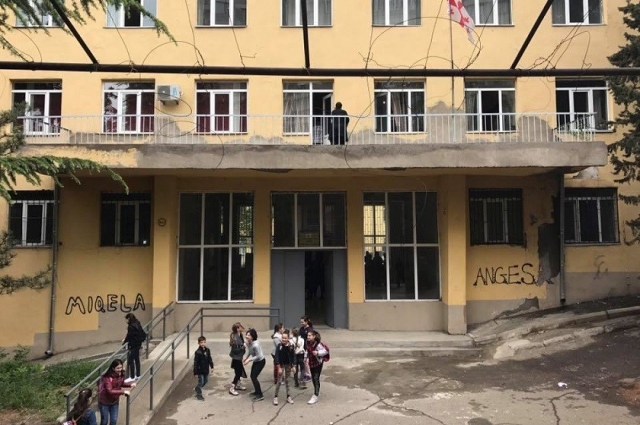New Report Calls on Europe to Counter Sexual Orientation-Based Violence in Schools
PRESS RELEASE
Violence at schools based on sexual orientation, gender identity or expression or sex characteristics occurs everywhere in Europe and is acutely underreported. The efforts of the European education authorities to address the problem must be stepped up in order to create safe environment for children and prevent negative impact on students’ health and achievements. These are the key findings of the new report prepared by the Council of Europe in partnership with UNESCO that was published today.
Violence based on sexual orientation, gender identity or expression or sex characteristics (SOGIEC-based violence) is rooted in cultural norms and expectations about gender and gender roles. It can be psychological, physical or sexual, and occur in or around the schools, as well as online. According to the survey, verbal violence and bullying are its most prevalent forms.
“Any student who is perceived not to conform to prevailing norms – be it physical appearance, choice of clothing, manners, or emotional or physical attraction to others – may become its victim,” says Eleni Tsetsekou, the Head of the Sexual Orientation and Gender Identity Unit of the Council of Europe. “Its key victims are LGBTI students, with transgender and gay male students reporting the highest levels of violence. However, it also targets non-LGBTI students and harms everyone involved – victims, perpetrators and bystanders.”
This type of violence affects mental and physical health of children, leading to depression, anxiety, efforts to conceal one’s identity, self-harm, suicidal thoughts and attempts. Students who have become victims are likely to have lower motivation, poorer educational achievements, miss classes or drop out of school, and in the long term risk experiencing economic difficulties and be more likely to engage in anti-social behaviour.
The SOGIEC-based violence in education occurs everywhere, but is acutely underreported: in the United Kingdom, for instance, 45% of LGBT students bullied in the secondary school never tell anyone.
“The scale of the problem is much larger than official estimates suggest. This makes it even more urgent for the education sector authorities in Europe to devise comprehensive responses to the problem,” Tsetsekou said.
These responses must not be limited to national and school-level policies to prevent and address SOGIEC-based violence, but should also include curricula and learning materials supportive of diversity, training for educational staff, support for students, partnerships with civil society, as well as monitoring violence and evaluating responses.
Up to now, the report says, full comprehensive responses have been found in six member States of the Council of Europe: Belgium (regionally), Ireland, the Netherlands, Norway, Sweden and the United Kingdom. Despite positive developments in the last decade, education sector responses to this type of violence in education sector are still lacking entirely in around ¼ of all Member States. The report offers recommendations to European states on how to ensure that all children can enjoy their right to education, in a safe environment.
The importance of this goal was underlined by Christophe Cornu, Senior project officer at UNESCO that partnered with the Council of Europe on the preparation of the report:
“UNESCO’s work in preventing and addressing homophobic and transphobic violence in educational settings is part of its mandate to ensure that learning environments are safe and inclusive for all. This is crucial to our contribution to the achievement of the global 2030 Agenda for Sustainable Development.
“This publication builds on the Out in the Open Report produced by UNESCO in 2016, which provided the first global overview of the nature, scope, and impact of, homophobic and transphobic violence in schools, and education sector responses. Our two organizations are proud to join forces to ensure no child or young person experiences discrimination or violence in school on the basis of their actual or perceived sexual orientation and gender identity.”
For more information, see this interview with Eleni Tsetsekou, the Head of the Sexual Orientation and Gender Identity Unit of the Council of Europe.
Photo: Imedi












